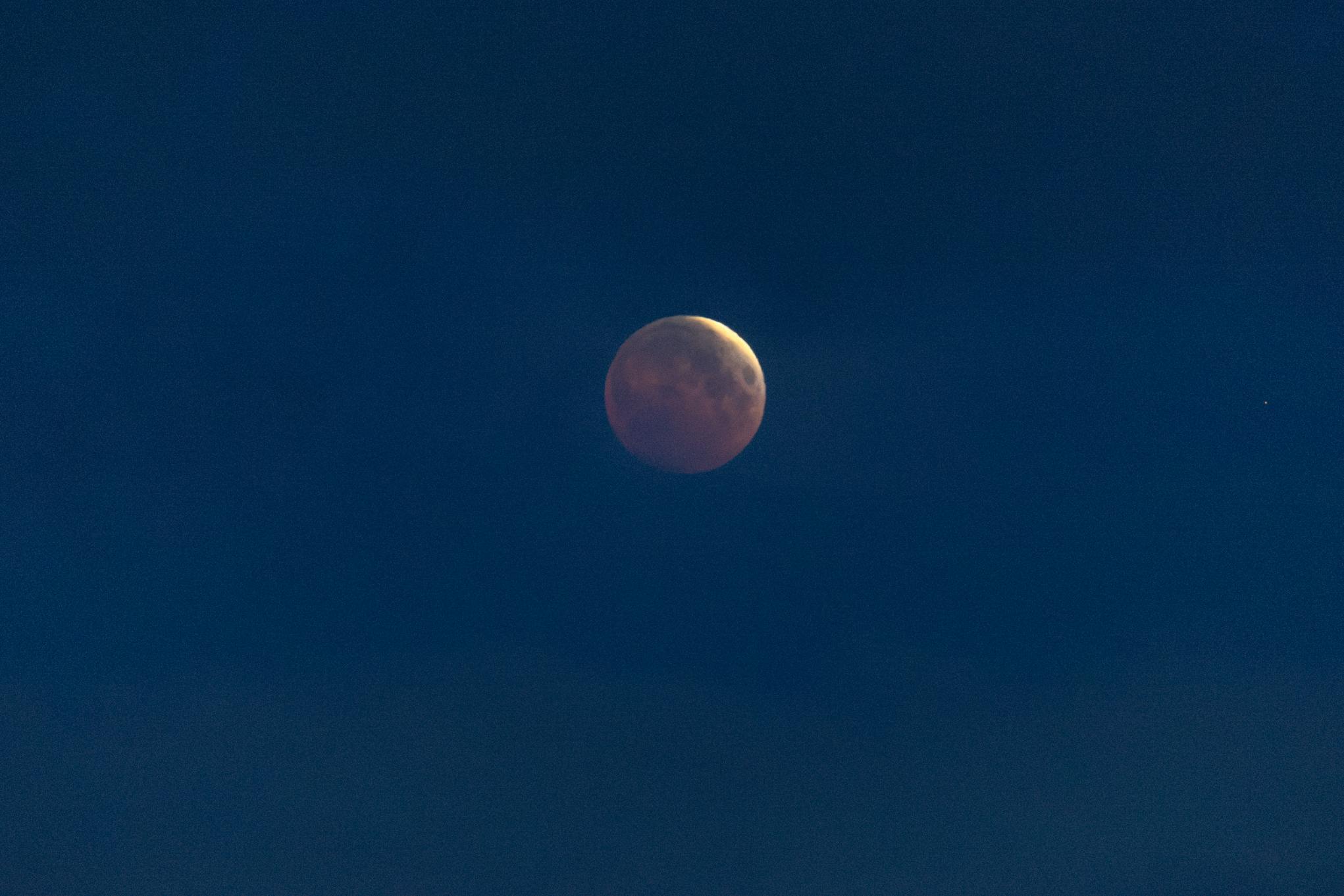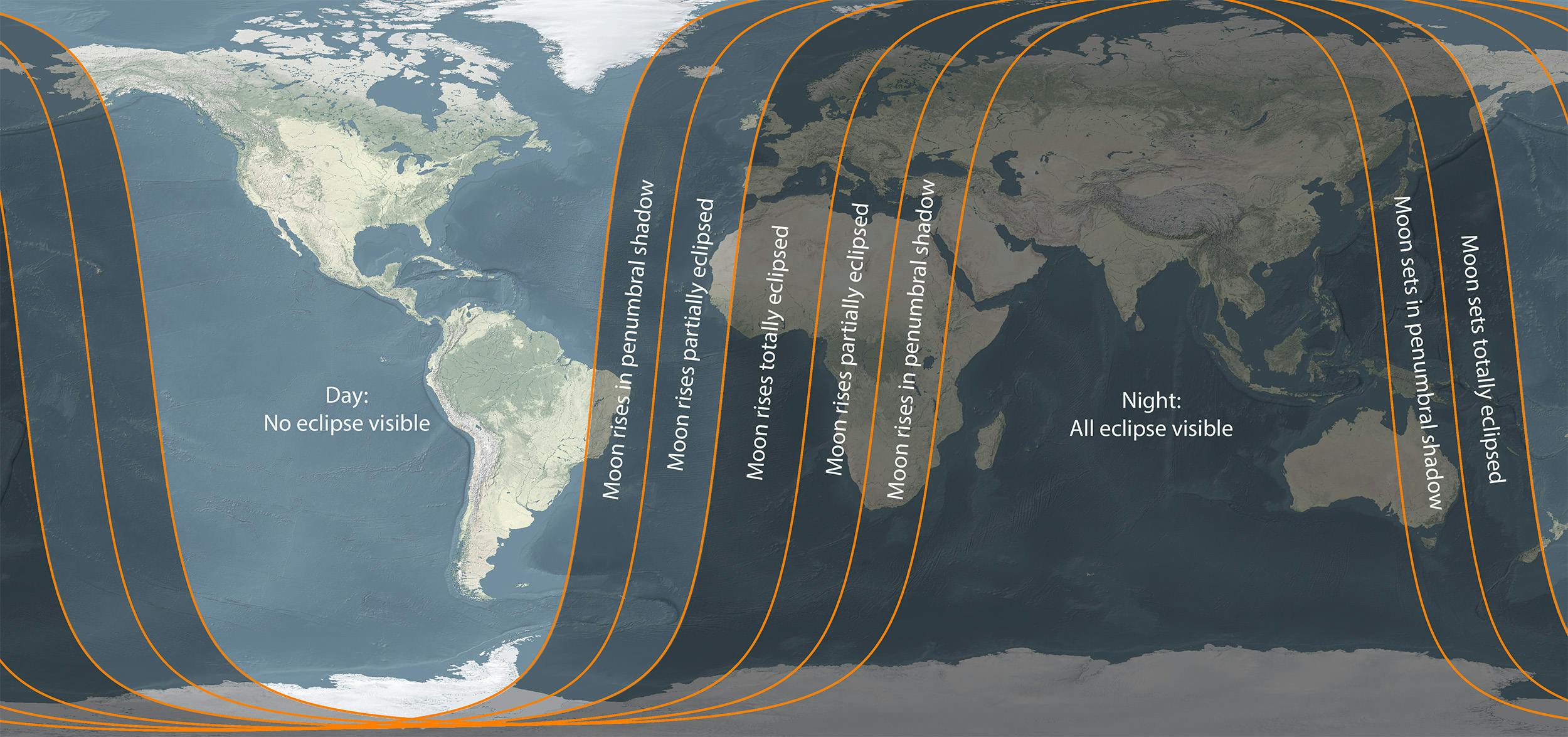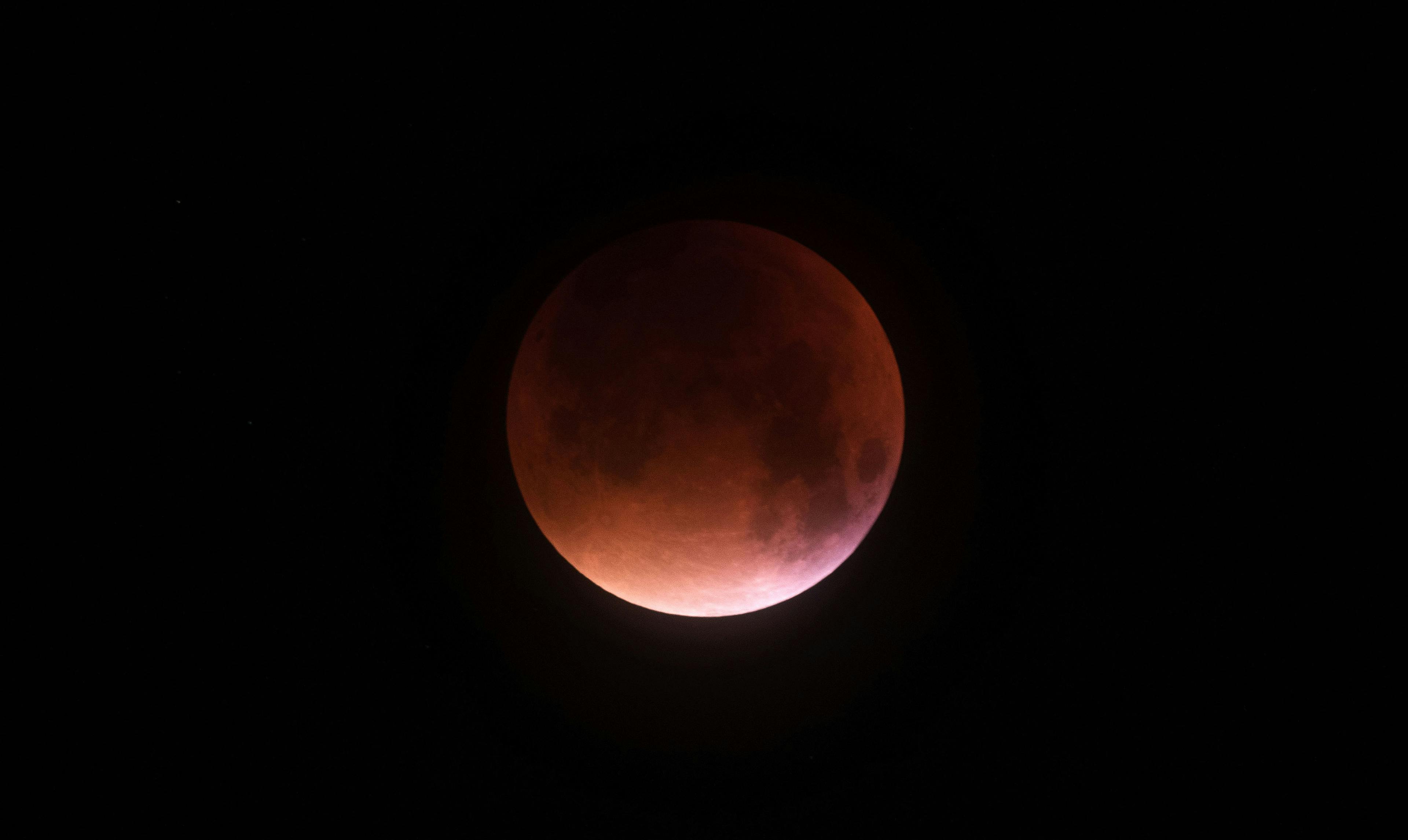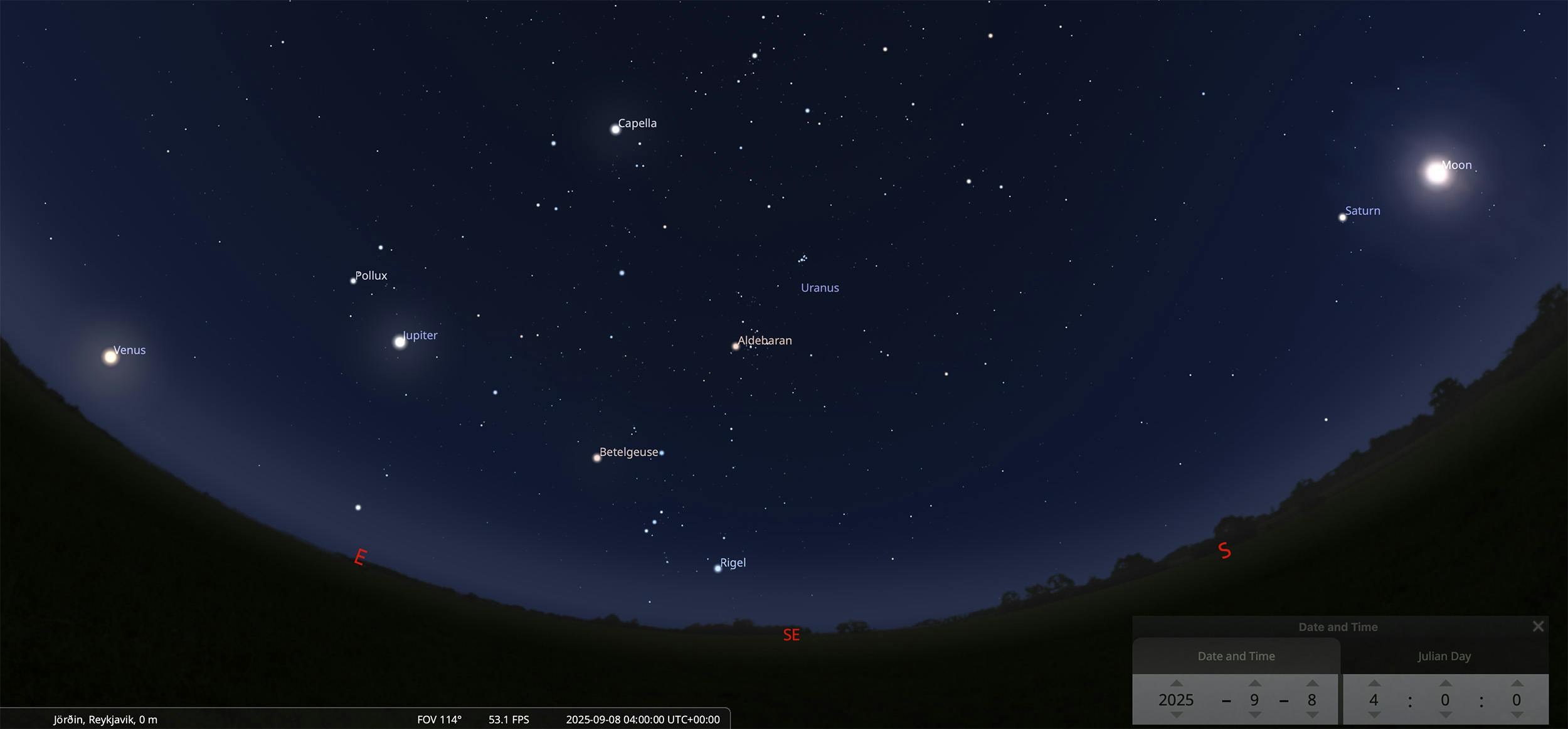
September 7, 2025 total lunar eclipse
In Iceland, a partially eclipsed Moon rises in the East but in the penumbral shadow in Reykjavík
On September 7, 2025, a total lunar eclipse will be visible from Australia, Asia, Africa and Europe. As seen from Iceland, a partially eclipsed Moon rises in the Eastfjords at 19:46 UT. In Reykjavik, however, the Moon rises half an hour later and is then in the penumbral shadow. Therefore, people in the Eastfjords are the only ones able to see a partial lunar eclipse from Iceland.
Last time a lunar eclipse was seen from Iceland was on March 14, 2025. Next one happens on August 28, 2026.
Where can I see the September 7, 2025 total lunar eclipse?

Credit: Andreas Dill / Iceland at Night
Timings of the September 7, 2025 total lunar eclipse
- Start of penumbral eclipse: 15:38:06 UT (Moon below horizon as seen from Iceland)
- Start of partial eclipse: 16:26:51 (Moon below horizon as seen from Iceland)
- Start of total eclipse: 17:30:37 (Moon below horizon as seen from Iceland)
- Maximum eclipse: 18:11:46 (Moon below horizon as seen from Iceland)
- End of total eclipse: 18:53:18 (Moon below horizon as seen from Iceland)
- End of partial eclipse: 19:56:53 (Moon rises in Eastfjords at 19:46 UT)
- End of penumbral eclipse: 20:55:28 (Moon rises in Reykjavík at 20:16 UT)

Total duration of the eclipse is 5h 27m 22s. Totality lasts for 1h 22m 41s.
Moon is in the constellation of Aquarius during the eclipse.
Why are total lunar eclipses often called "bloodmoon"?
During totality, the Moon appears reddish. The reason is that sunlight passes through Earth's atmosphere and illuminates the Moon. This reddish light is why total lunar eclipses are sometimes called "bloodmoons".
The red light comes from every sunrise and sunset happening on Earth at the same time. It sometimes varies between eclipses depending on how dusty Earth's atmosphere is.

How to watch a lunar eclipse?
You don't need any optical aids to watch the lunar eclipse. However, it is even more interesting to watch the eclipse with the help of binoculars or small astronomical telescope.
How to photograph a lunar eclipse?
Photographing the lunar eclipse is very easy if you are using a DSLR or mirrorless cameras and a nice long focal length lens, for example 400mm or longer. A stable tripod is a must during totality as a longer exposure is needed.
Shooting the eclipse with a smartphone is more cumbersome since the Moon's disk will be tiny. Instead, we recommend using a telescope and image through the eyepiece or buy an adapter to do so.
A high quality telescope on a computerised mount is, of course, the best way to capture the beauty of the eclipse.
People in the Eastfjords of Iceland can photograph a partially eclipsed Moon rise just before 20:00 UT, as long as mountains don't block the view.
Why do lunar eclipses occur?
Lunar eclipses occur when the Sun, the Earth and the Moon are in a direct line, called syzygy, so that the Moon crosses Earth's shadow. During totality, the Moon passes into the darkest part of Earth's umbra.
Lunar eclipses don't occur every month since the orbit of the Moon is tilted by about 5 degrees. Therefore, most of the time, the Moon passes north or south of the shadow.
What else is visible in the night sky?
In the evening of September 7, 2025, Saturn shines to the left of the Moon. Jupiter rises in the northeast around midnight, close to Gemini the Twins. Around 04 in the morning, brilliant Venus rises in northeast.

Partial solar eclipse on September 21
Two weeks later, a partial solar eclipse occurs that can be witnessed from the south Pacific, New Zealand and Antarctica. In New Zealand, more then 80% of the Sun will be eclipsed.
When are next lunar eclipses visible from Iceland?
Next lunar eclipses visible from Iceland will be on:
- August 28, 2026 - Partial eclipse - very deep partial eclipse
- January 12, 2028 - Partial eclipse
- December 31, 2028 - Total eclipse
- June 26, 2029 - Total eclipse
- December 20, 2029 - Total eclipse
- October 18, 2032 - Total eclipse
- April 14, 2033 - Total eclipse
Eclipse Predictions by Fred Espenak, www.EclipseWise.com.
Illustrations by Andreas Dill / Iceland at Night
Sævar Helgi Bragason is an award winning astronomy and science communicator and educator, lecturer, author, TV host and owner and editor of icelandatnight.is and eclipse2026.is.


